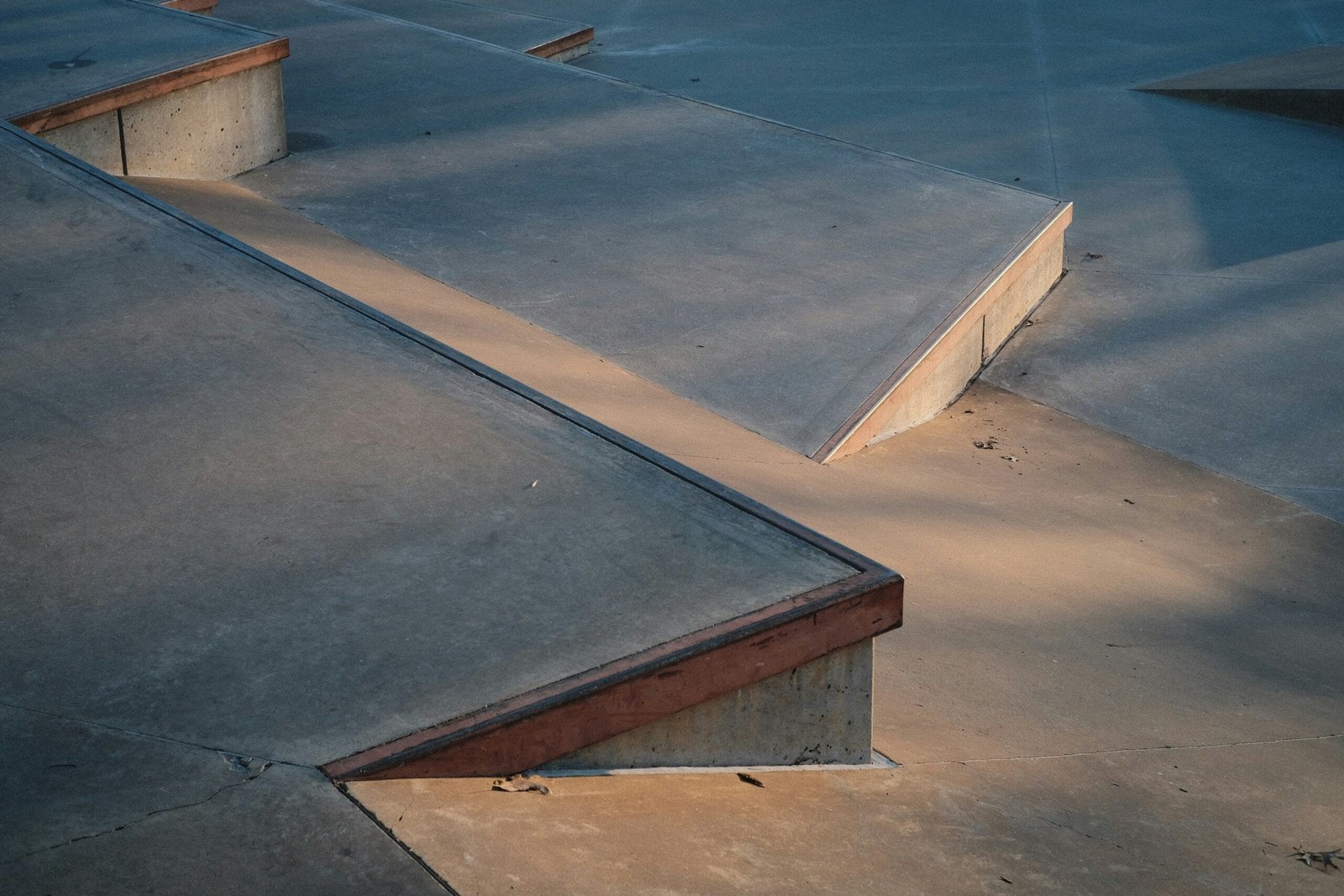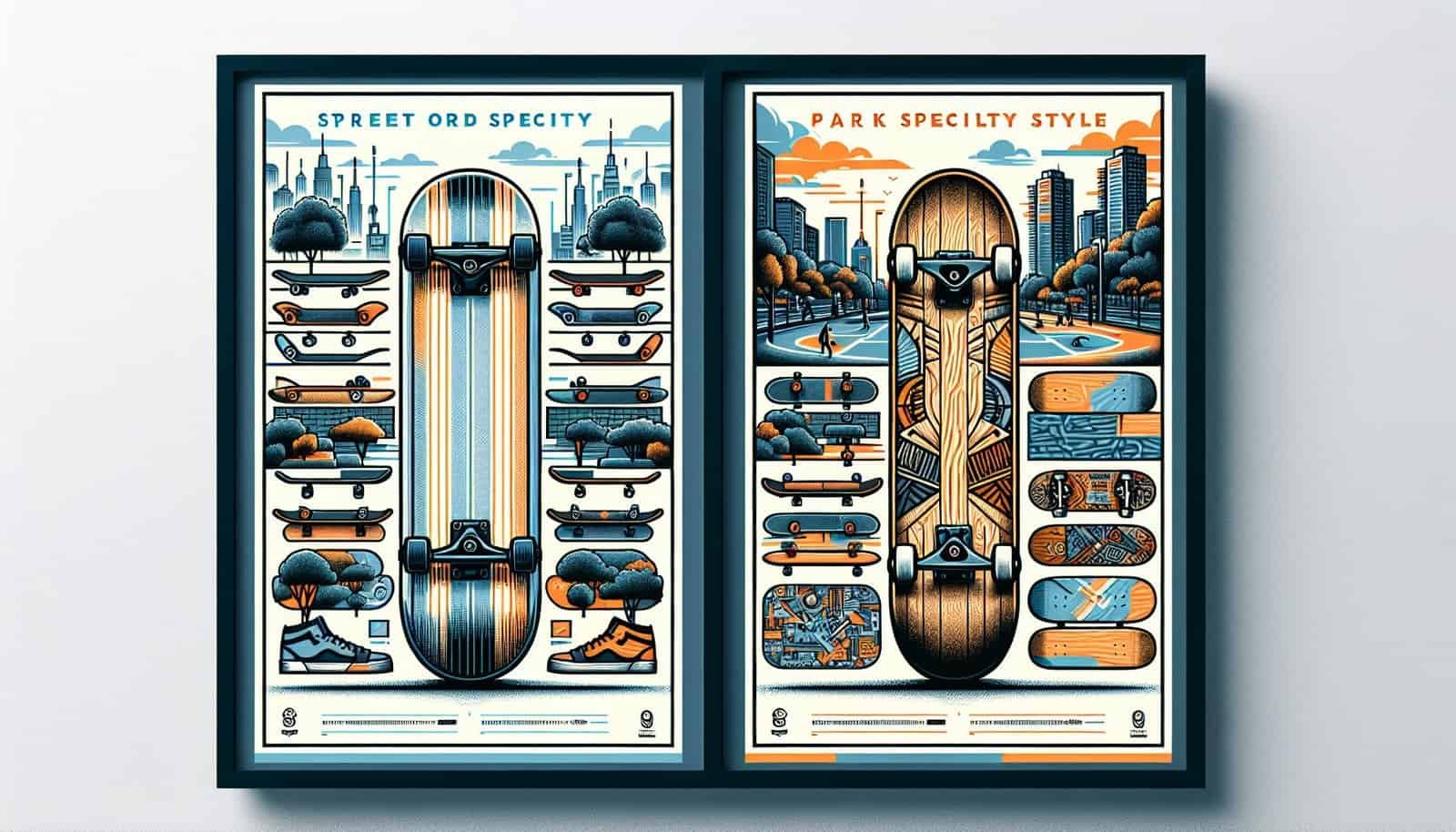How do you know which skateboard deck shape is right for street versus park skating?
Choosing the right skateboard deck shape can feel overwhelming, especially when you’re trying to decide what works best for street skating versus park skating. Whether you’re a beginner finding your footing or a seasoned skater looking to optimize your board for specific styles, understanding the nuances of skateboard deck shapes can make a significant difference in your performance and enjoyment.
Understanding Skateboard Deck Anatomy
Before diving into the specifics of deck shapes for street and park skating, it’s essential to understand the basic anatomy of a skateboard deck. Knowing these components will help you make informed choices based on your skating style and preferences.
Width
The width of a skateboard deck is crucial as it affects your balance and control. Wider decks offer more stability, ideal for ramp and park skating, while narrower decks are more responsive and better suited for street tricks. Typically, skateboard decks range from 7.5 to 8.5 inches in width.
Length
While length might not be as crucial as width, it still plays a role in the board’s performance. Longer decks provide more room for maneuvering and stability, which some skaters prefer for cruising and park skating.
Wheelbase
The wheelbase is the distance between the front and back wheels. A shorter wheelbase allows for quicker, more agile turns, which can be beneficial for technical street skating. In contrast, a longer wheelbase offers a smoother, more stable ride, favored in park settings.
Nose and Tail
The nose is the front of the skateboard, which is often slightly longer, while the tail refers to the back end. Both are curved upwards, allowing you to perform various tricks. The steepness of the curves can influence the ease with which you can perform certain maneuvers.
Street Skating vs. Park Skating
When selecting a deck shape, it helps to consider what type of skating you’ll be doing most frequently. Street skating and park skating differ significantly not only in the terrains you conquer but also in the tricks you perform.
Street Skating
Street skating occurs in urban environments, where you use elements like stairs, railings, and benches to perform tricks. It requires agility, precision, and creativity.
Deck Preferences for Street Skating
- Narrow Decks (7.5”-8.0”): These provide quick flips and are easier to maneuver when performing technical tricks.
- Lighter Weight: A lighter deck is beneficial for popping tricks and carrying the board around the city.
- Steep Concave: This helps with foot placement and performing tricks like kickflips and heelflips.
Park Skating
Park skating takes place in venues specifically designed for skating, including ramps, half-pipes, and bowls. It focuses on high-speed runs and larger, flowing tricks.
Deck Preferences for Park Skating
- Wider Decks (8.0”-8.5”): These offer more stability and support for larger airs and carving through transitions.
- Heavier, Durable Construction: A sturdier build can withstand the higher impact and force of park skating.
- Mellow Concave: Provides a stable platform for balance and large ramp tricks.

The Role of Concave
Concave refers to the curvature across the width of the skateboard. This feature affects grip and board feel, influencing the tricks you can perform.
Types of Concave
- Radial Concave: Most common, with an even curve from edge to edge, providing excellent grip for tricks.
- Progressive Concave: A steeper curve that offers better control and stability, often preferred for street skating.
- W-Concave: Forms a second slightly elevated section towards the center, providing more control over your flicks. Ideal for technical skaters.
- Flat Concave: Minimal concave for those who prioritize comfort over technical skill.
A table to summarize can be beneficial:
| Concave Type | Characteristics | Best For |
|---|---|---|
| Radial Concave | Even curve; good grip | General skating |
| Progressive Concave | Steeper curve; better control | Street tricks |
| W-Concave | Elevated middle section; adds flick control | Technical tricks and street skating |
| Flat Concave | Minimal curvature; comfort | Casual cruising and mellow park skating |
Materials Matter
The material of your deck doesn’t drastically alter shape, but it does impact weight and durability. Most decks are made from seven layers of maple wood, but alternative materials are emerging:
- Maple: Known for its flexibility and durability, popular among skaters for all types of skating.
- Bamboo: Offers a lighter weight and is more environmentally friendly.
- Fiberglass/Composite Decks: Include materials like fiberglass for added strength and pop, often used in performance skateboards.

Personalizing Your Board
While general preferences exist for specific styles of skating, personal preference plays a significant role. Your body type, foot size, and even the type of tricks you enjoy performing influence what deck shape feels right for you.
Testing Different Decks
Trying out a friend’s board or visiting a shop with demo setups can provide invaluable insights. Pay attention to:
- How the board feels under your feet
- The ease of performing your favorite tricks
- Your comfort level riding and maneuvering
Adjustments and Customization
Fine-tuning your setup can make any board more suitable for your intended use. Grip tape, trucks, and wheels all play a part:
- Grip Tape: Choose textures that support your skating style.
- Trucks: Ensure they are the right width for your deck and consider softer bushings for more responsive turns.
- Wheels: Park skaters typically use larger wheels (54-60mm) for speed, while street skaters prefer smaller wheels (50-54mm) for agility.
The Importance of Board Feel
Different skaters describe this in their unique way, but “board feel” is essentially how the board responds to your movements. The right deck shape enhances this feel, improving your connection with the board while skating.
Factors Affecting Board Feel
- Deck Thickness: Thicker decks feel solid underfoot and are usually heavier, which some prefer for stability.
- Flexibility: A balance between flex and stiffness helps in absorbing impact while still providing control during tricks.
- Weight Distribution: Heavier nose or tail can alter the center of gravity, influencing flips and tricks.

Trying Before Buying
Sometimes, the only way to truly know if a deck is right for you is to try it. Many skate shops offer demo days or have test boards available. Take advantage of these opportunities to try different sizes, shapes, and concaves.
Questions to Ask When Testing
- Comfort: Does the board feel stable and comfortable?
- Control: How well can you execute your basic tricks?
- Fit: Does the size feel right for your height, shoe size, and skating style?
Common Misconceptions
It’s easy to get caught up in trends or recommendations without considering how they apply to your skating. Here are some misconceptions to avoid:
Wider is Always Better for Park Skating
While a wider deck typically offers more stability, it should still match your foot size and personal comfort.
Lighter Boards Are Automatically Better for Street Skating
While lighter boards can make it easier to pop tricks, they might lack the durability needed for frequent use on rough terrain.
Materials Don’t Affect Performance
The type of wood or composite materials can have a subtle but important effect on pop and durability.

Keeping Your Deck in Prime Condition
Once you’ve found your perfect skateboard deck, maintaining its condition is key to getting the most out of it. Consider these tips for extending the life of your board:
- Avoid Water Exposure: Moisture can warp the deck and ruin grip tape.
- Regular Cleaning: Keeping your board clean extends its lifespan. Wipe down the deck and wheels often.
- Check Hardware: Ensure bolts and screws are tight and in good condition.
- Replace Grip Tape as Needed: Over time, grip tape can wear down, reducing control.
Conclusion
Choosing the right skateboard deck shape doesn’t have to be daunting. By understanding your specific needs, style of skating, and the environments you frequent, you can make a well-informed decision. Remember that personal preference plays a substantial role, so feel empowered to experiment until you find the perfect fit for your skating journey. Enjoy the ride, stay safe, and keep pushing the limits of what’s possible on your skateboard.

